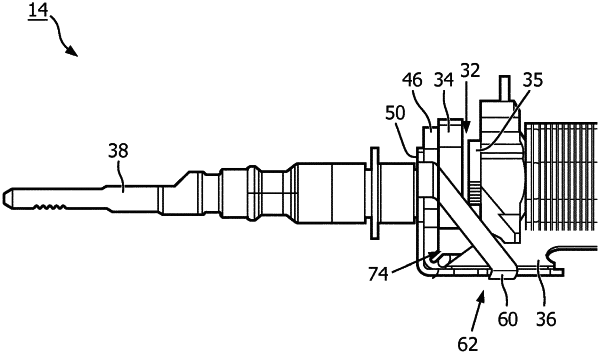| CPC A61C 17/221 (2013.01) [A46B 5/0037 (2013.01); A46B 13/02 (2013.01); A46B 15/0012 (2013.01); G01L 1/122 (2013.01)] | 10 Claims |

|
1. An electric toothbrush comprising:
a handle portion having a shaft configured to receive a brushing load from a bristled end of a brush head;
a sensor assembly configured to determine a deflection proportional to the brushing load with respect to a first direction associated with the brushing load, the sensor assembly including an air gap and configured to determine the deflection based on changes in the air gap; and
a compliant element configured to control an amount of the deflection in response to the brushing load, wherein the toothbrush further comprises
a dual-stiffness mounting bracket connecting between opposite sides of the air gap, the mounting bracket including a first leg coupled to the shaft and a second leg coupled to the compliant element wherein the mounting bracket includes one or more arms extending transversely between the first leg and the second leg and configured to prevent relative rotation of the first and second legs in the first direction in response to brushing loads, while permitting relative rotation of the first and second legs in a second direction substantially opposite to the first direction in response to drop loads, such that the mounting bracket is configured with a first bending stiffness with respect to the first direction, and a second bending stiffness with respect to the second direction, wherein the first bending stiffness is greater than the second bending stiffness.
|